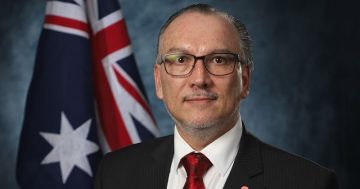Rachael Shaw* discusses seven steps leaders in the public service can take to bring a wellbeing focus into the workplace.
 Over the past few years COVID-19 and natural disasters experienced across NSW have taught us a great deal about ourselves, each other and our ability to adapt and change.
Over the past few years COVID-19 and natural disasters experienced across NSW have taught us a great deal about ourselves, each other and our ability to adapt and change.
As we come out the other side of this we are now feeling our way through a new world.
This transition into hybrid workplaces requires us to continue to use virtual skills and locate information coming to us from across a range of platforms.
In this ‘new normal’ let’s take a moment (and a breath) to locate ourselves, listen to the sounds around us and let them bring us into the present.
Last year I attended a virtual webinar by Robert Biswas-Diener about the ‘connection crisis’ where some very poignant issues were raised that may have fallen by the wayside.
The main points to takeaway focussed on removing all distractions, giving good eye-contact, slowing down and absorbing the conversation.
He modelled this whilst delivering the webinar (which was attended by a good number of people).
Around thirty minutes into the discussion I noticed many people who had initially appeared distracted by something else, began to look up into their screens and seemed more engaged.
As I watched facial expressions change from looks of concentration to interest, I wondered how being reminded of these skills (something we used to do naturally) is affecting our career trajectories.
No longer being in the office full-time, it may be more difficult for emerging leaders to stand out from the crowd and make a good impression whilst meeting existing deadlines and meeting business needs.
The 2022 PMES survey results indicate public sector employee wellbeing remains low at 58 per cent.
That’s almost half of the workforce.
In terms of tenure those employed less than one year sit at 74 per cent and those employed ten to twenty years and over sit at 54 per cent.
This indicates employee wellbeing over the time employed is declining.
There is no doubt improving employee wellbeing will be a focus for many workplaces across the public sector in 2023 and this creates development opportunities for emerging leaders.
With a stronger focus on wellbeing in the workplace one way to stand out (whilst gaining examples to use in applications and interviews) is to ensure you not only have your personal development plan to achieve a higher duties role but also to practice servant leadership by transparently and authentically implementing practical strategies to care for your own wellbeing, and for that of your colleagues.
Seven things you can do now to begin your own wellbeing project:
- Chat to your manager about promoting wellbeing within your team(s).
- Start the conversation within your own teams, do some research and find out what best suits the needs in your area.
- Create time(s) to get together and reflect on team wellbeing.
- Consider what motivates you as an individual and what motivates you together as a team.
- Ask colleagues in other teams what they are doing to connect with each other.
- Model wellbeing behaviours you wish to see in others.
- Discuss and record noticeable changes over time resulting from your interventions and use this as an example for higher grade positions.
These things may seem challenging to do in the beginning but stick with it and get support from others.
Create a ripple effect and create a job application or interview example that many others will not have.
An example like this will give you more depth and experience as an applicant, show your level of commitment to organisational objectives and demonstrate your abilities to collaborate and positively influence others.
Positive psychology and wellbeing research consistently reinforces that when employee wellbeing is high, so too is employee commitment, productivity and motivation.
Seems like a win/win to me!
*Rachael Shaw, Project Officer, Information, Access and Exchange, Statewide Services at the NSW Department of Communities and Justice. She can be contacted at [email protected]











